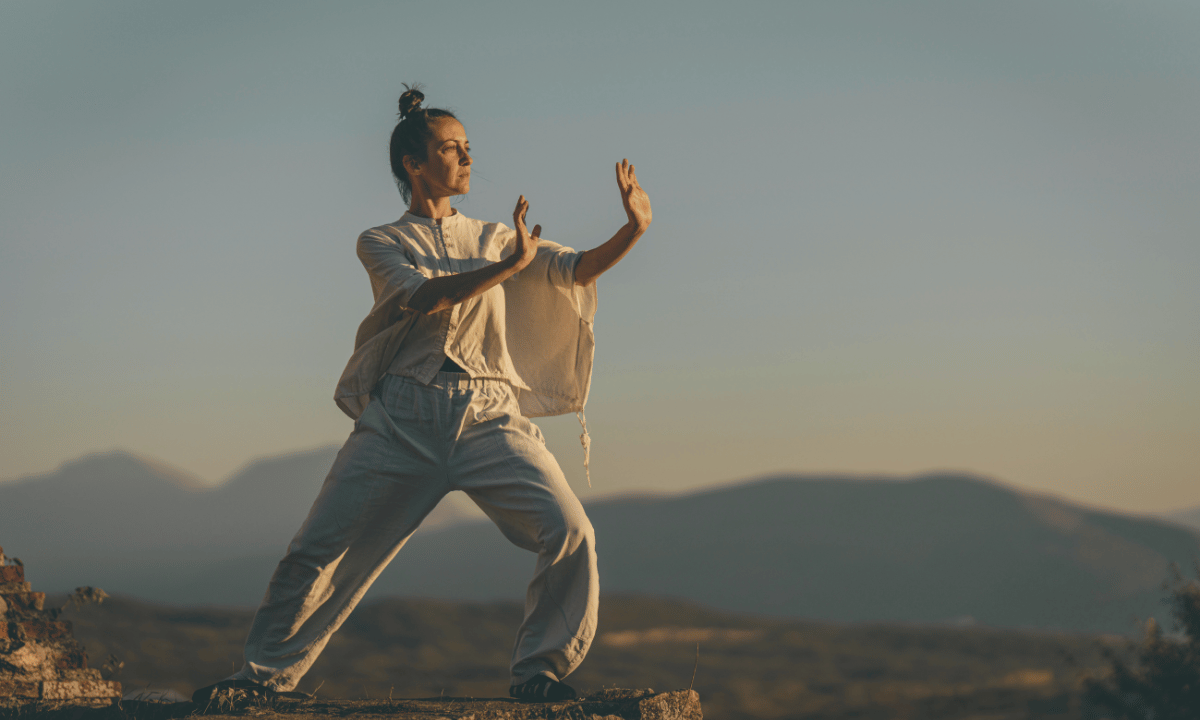
Tai Chi vs Yoga: What’s the Difference?
Tai chi vs. yoga: what’s the difference? Is this question popping up in your mind? If yes, this article is for you. Through this article, we’re going to let you know complete information describing the key differences between tai chi and yoga.
You may have seen people doing tai chi and yoga many times. Despite seeing it several times, you may have found it difficult to differentiate the two. Tai chi seems similar to martial arts in slow motion whereas yoga is where people in spandex tend to stand on their heads.
Although it’s the basic difference, there are many others that you should know when it comes to differentiating the two. So, let’s assess tai chi vs. yoga and understand the differences between these two so that you choose which one you should follow!
Let’s explore!
Key Differences Between Tai Chi And Yoga
Tai chi and yoga are different and understanding them is essential if you’re to choose one of the two. Now that we’ve understood the basis, let's compare tai chi vs yoga on a variety of parameters and know how they are different from each other!
History
Tai chi and yoga are different in their history as well. Tai chi tends to have its roots in ancient China. It originated from the martial art qi gong. It has a history of more than a thousand years. The initial written reference to tai chi found in the Book of Changes dates back to around 3000 years ago.

Yoga, on the other hand, was born in ancient South Asia. You may know that the Vedas, which were written around 5,000 years ago, contain the first documented utilization of the very term yoga. It means yoga existed for more than 5, 000 years ago.
Goal
When it comes to the comparison of tai chi vs. yoga, the goals of these two are also different. Thi chi happens to be a form of qigong which is a kind of practice extracted from ancient China that aims to cultivate and move one’s energy around the entire body. The Qi can be defined as "vital energy” or “subtle breath” and gong can be interpreted as “skill cultivated by continuous practice”.
Tai chi focuses more on the balance within the body and mind along with nature and moving energy through consistent and dynamic movement.
Yoga, on the other hand, is all about unifying the mind, body, spirit, and nature. However, there are many forms and styles of yoga, it aims to do it through a complete amalgamation of pranayama, breathing exercises, education and study, mudra (gestures aiming to intensify the energy flow), and posture or asanas.
Practicality
Practicality is one of the key differences between tai chi and yoga. You can often see people doing tai chi outside because it looks and feels right and comfortable in nature, in the sun, wind, and movement of clouds surrounding you. When you want to feel and move your energy, a natural environment is helpful. You can do tai chi in the space a cow can lie within.
Yoga on the other hand needs no place outside. It can be done in a sufficient place either inside the room or outside. You needn’t wear special clothes while doing yoga but it’s good to wear something you’re comfortable with. Besides, a yoga mat is standard as it’s appropriate and comfortable to step on, sit on as well as lie on, and prevent you from slipping while performing different poses.
Physical Position
Physical position is another one of the factors that differentiates tai chi and yoga. In general, you can practice tai chi while standing but for yoga, you need standing, sleeping, and staying down. Both tai chi and yoga are likely to be modified for people with limited mobility.
Movement
Tai chi and yoga are different in terms of movement too. Amazing to watch, tai chi happens to be a consistent procedure right from beginning to end. It’s designed to unleash and move energy around the human body. There’s a variety of styles of yoga, therefore, you find that the emphasis of yoga on the movement varies.
Many yoga poses have static poses. Yin yoga tends to be contemplative practice with static poses that happen to be held longer around five minutes, or sometimes more than that. It’s a class that is focused more on pranayama (breathing exercises) and may have you sitting or lying in just a single position for the entire time.
Breathing
Both tai chi and yoga are different in terms of breathing. The breath tends to be the vehicle for energy in tai chi, hence, an integral part of the very practice. Breathing is a core component of yoga as well. Yogic breathwork, or pranayama, can be performed while you’re sitting or lying down on the surface or bet. It’s incorporated into asanas and yoga flows, too.
It’s to say that breathing is a constitutive and one of the key elements of both yoga and tai chi.
Accessibility
Tai chi is suitable for beginners and can be rewarding, even though it tends to be difficult to learn all the movements. One of the pluses of tai chi is that you don’t need any special training, or preparation to get started.
It’s appropriate for seniors as well. One of the reasons that makes tai chi popular among seniors is that it has low impact and improves balance. Tai chi isn’t an aerobic exercise like sprinting, but a physical activity that tends to be a key component for a healthy lifestyle.
Yoga is also suitable for beginners. There are several styles of yoga, many asanas, and a variety of possibilities aiming to modify those postures, making yoga easily adaptable for everyone. Beginners don’t need to fear being able to practice yoga poses.
Same as beginners, yoga is particularly well-suited to seniors as well just because of its adaptability. Yoga for seniors provides variations which include chair yoga, meaning anyone can practice yoga that’s right for their personal mobility level and goals.
Conclusion
That’s all about tai chi vs. yoga. Both tai chi and yoga are different from each other on various terms. We assessed them on a variety of terms including history, goals, movement, breathing, accessibility, and the like, and tried to know how they are different. Hopefully, you’ve got the answer to your questions!








